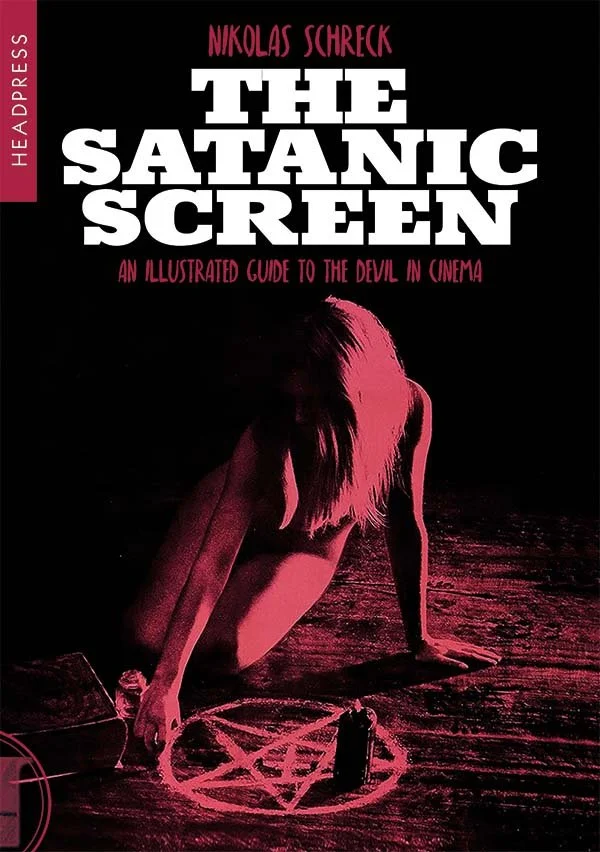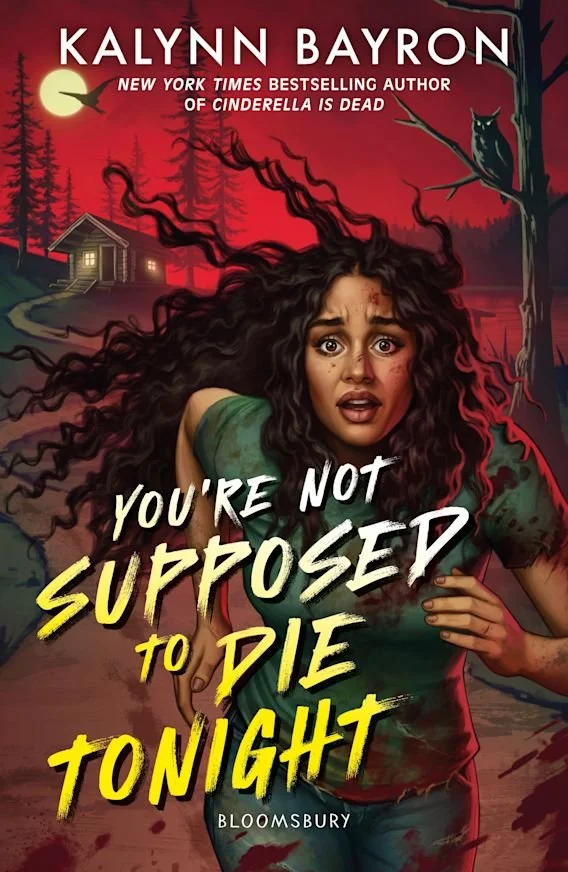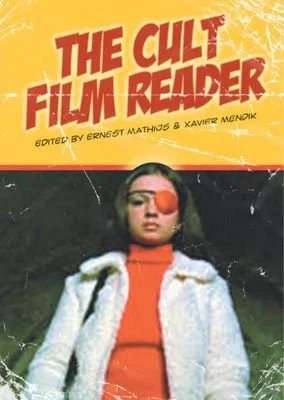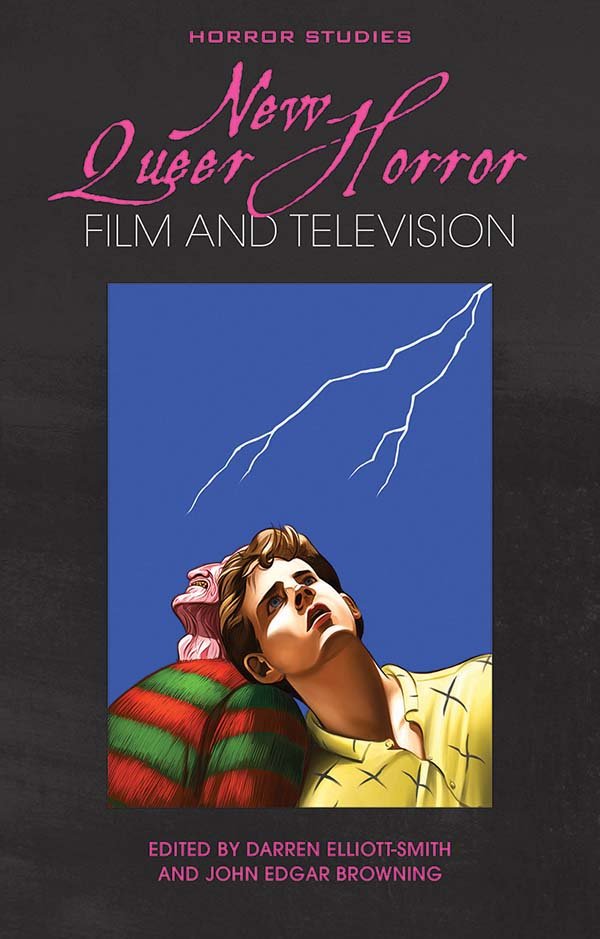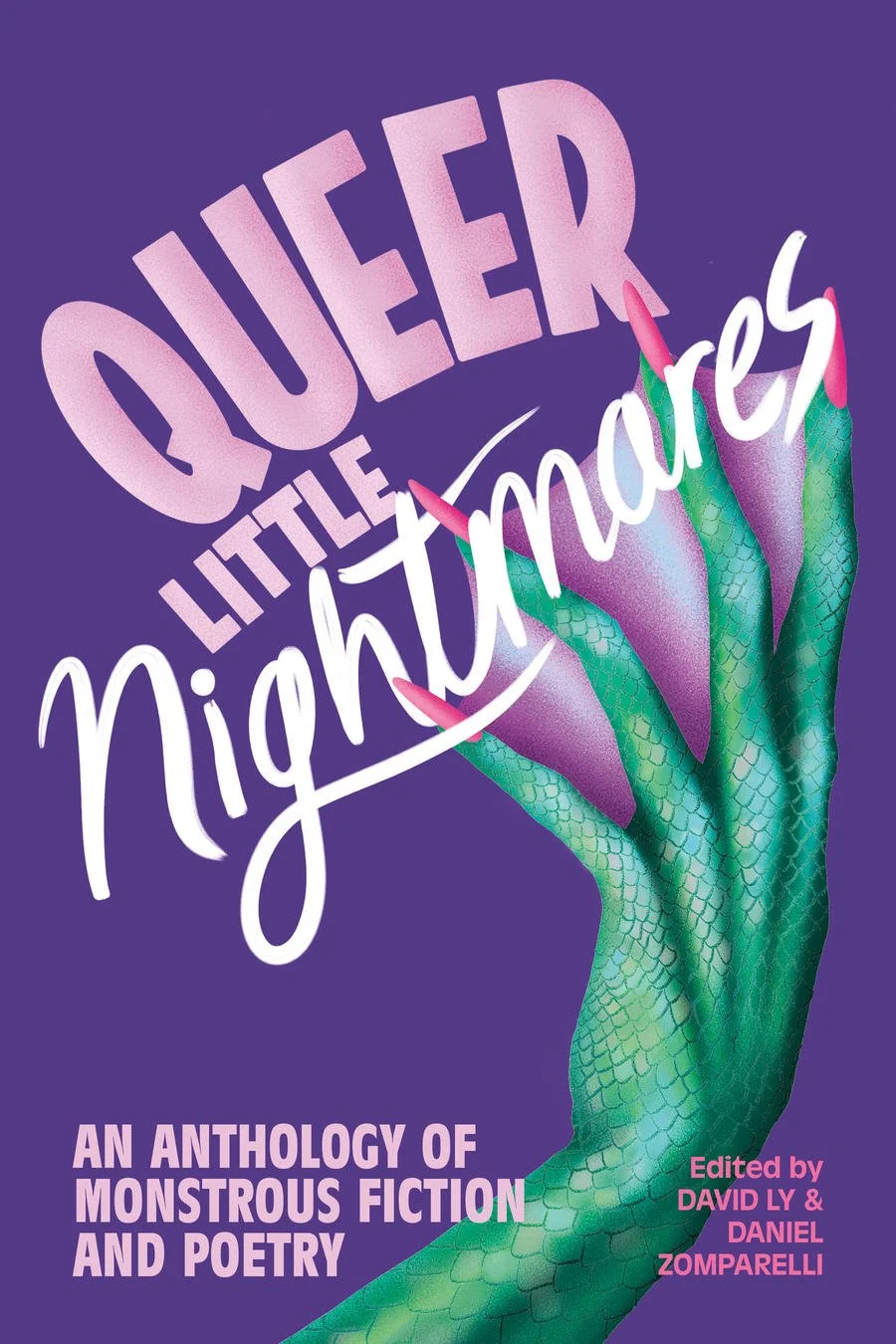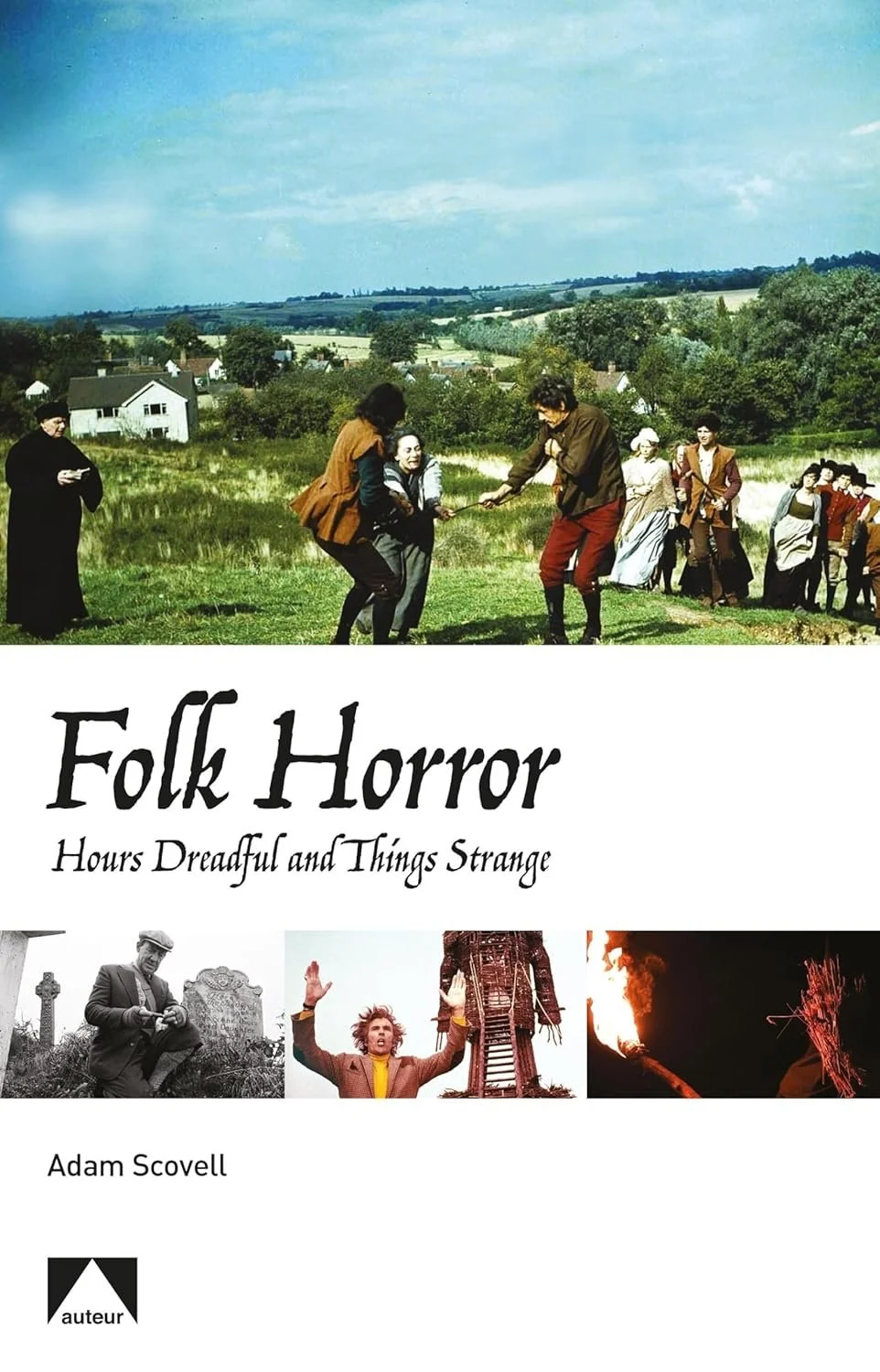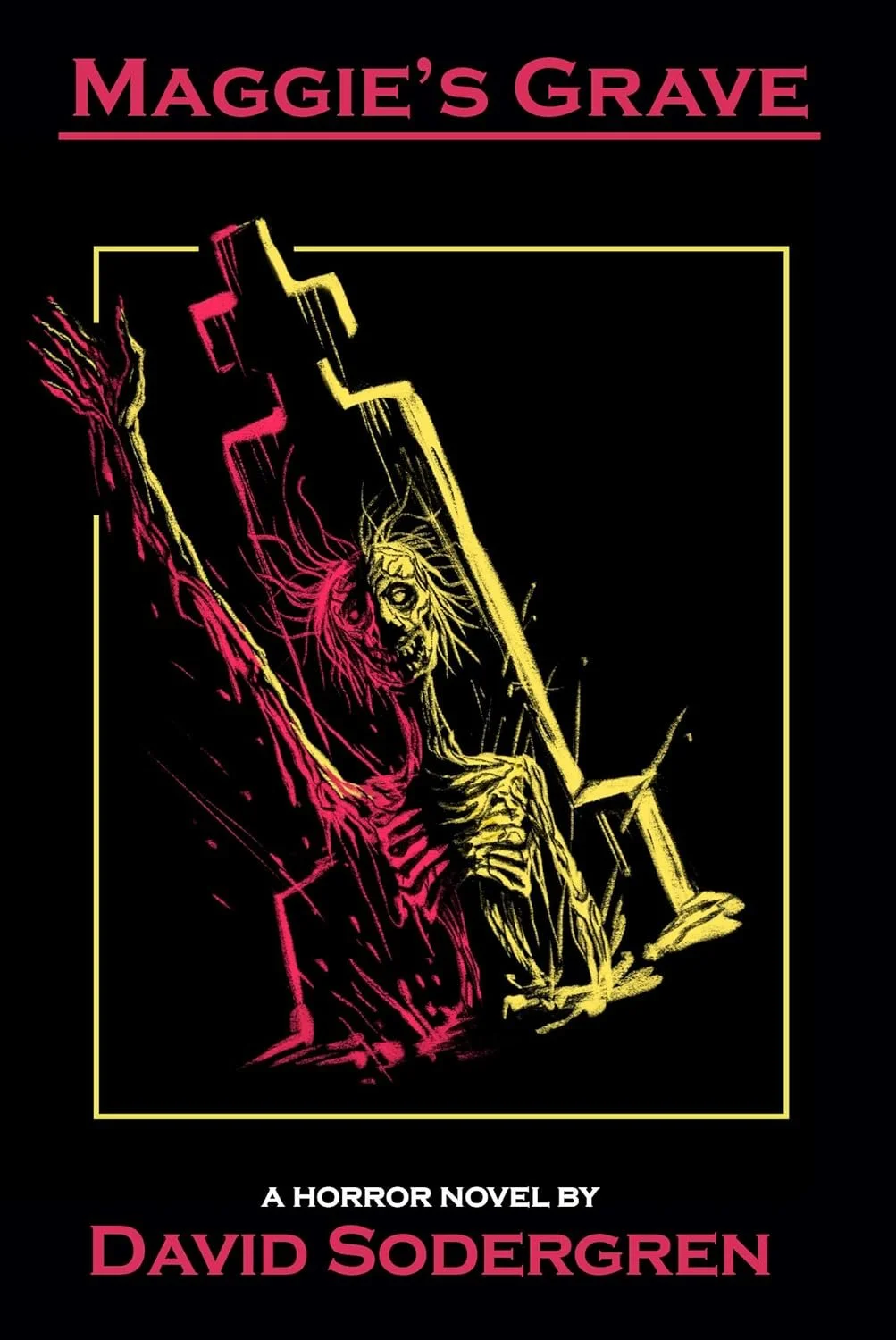That's a Wrap: The Perfect Bookish Gift
Still nursing that Halloween hangover? Us too. But as much as we may want to delay the inevitable, the holidays are just around the corner.
With November almost over, making sure you’re prepared is one of the best things you can do for your mental health during the countdown to the holidays…
It’s also the best thing for your wallet, ensuring you have time to hunt down deals, tailor your thrifting sessions, or create that special seasonal experience.
Some alarming statistics as we enter the 2024 holiday season:
The average UK household will spend £1,811.70 during the holiday period, which is a whopping 80% of the average monthly UK income.
3 in 5 people (58%) in the UK — that’s 31 million adults! — report receiving an unwanted gift at Christmas.
The total spend on unwanted gifts is estimated to be £1.27 billion.
46% of holiday shoppers still haven’t recovered from last year’s holiday debt.
Which is why books will always top my list as the perfect gift.
They’re easily tailored to interests, budgets, and can be recycled in a number of ways (from lending to regifting to donating).
Aside from their mindful, educational, and durable potential, they also encourage us to actively slow down and spend time on and with ourselves and loved ones. Whether you’re planning to do a simple book swap, arrange a themed thrifting challenge with family and friends, or craft a blind date with a book, creating a cherished bookish experience — much like the Icelandic tradition of sharing stories and space on Christmas Eve for Jólabókaflóð — is a beautiful way to spend the holiday.
Expressing your love and appreciation for that special someone by taking time and care when wrapping their gift is a huge part of curating the perfect cozy reading experience. Which is why we’re sharing our favorite book wrapping tutorial from Effective Spaces. Aside from the beautiful presentation, this method will have you wrapping bookish packages like a pro in no time. It also includes creating paper pockets (what every girl really wants) for you to fill with cards, tea, chocolate — whatever your bookish recipient desires!
Top tips
Double-sided tape is the key to creating that seamless finish.
We recommend 80 gsm wrapping paper to get the crisp lines just right.
And for that extra special touch, we love to decorate the paper with stickers (a fun way to hint at the theme or book title!)
And if you want to gift the perfect bookish experience — to yourself or the lucky horror-lover in your life — but don’t know where to start, click HERE to explore our Book Night(mare) Before Hex-mas Collection. 🖤
Working with ADHD: Find Your Focus (Part Two)
In my last post, Working With ADHD: Find Your Focus (Part 1), I shared three simple productivity hacks that have helped me improve my concentration. Below, you’ll find my final four tips.
Please note: this advice is NOT one-size-fits-all. Depending on your unique flavour of ADHD or other neurodivergence, some tips may be more helpful than others. The key is always to find what feels good for you, and adjust as needed!
#4: Practice time-blocking
Look… the idea of working nonstop for hours is extremely outdated. These days, even neurotypicals lack the necessary attention span, so take a more realistic approach to your time management. Many people find the Pomodoro Technique® helpful, as it breaks time up into manageable periods of focused work followed by timed breaks. Experiment with different work-and-break combinations to find what works best for you.
#5: Honour your energy
Scheduling tasks based on your energy can be very effective. If you tend to hit your creative peak after the sun goes down, tackle creative tasks in the evening. If your concentration levels are highest in the morning, use that time for copy editing or research. Mapping out your energy throughout the day, week, and month will help you plan your work accordingly.
#6: Keep your workspace organized
Clutter is the enemy of focus for many of us, so be proactive and nip those potential distractions in the bud. Before you sit down to start working, give the room a quick tidy and clear your immediate workspace of clutter. If visual distraction is an issue, try out a storage system that keeps smaller objects hidden from view, like a small chest of drawers or a couple of lidded baskets.
#7: Hide your phone
Confession: I am addicted to my phone. If I were Gollum, my phone would be my precioussss. The sweet dopamine hit of an Instagram like, the thrill of the reddit scroll, the endless supply of topical and hilarious memes… I can’t say no. If my phone is within reach, I‘ll inevitably reach for it. That’s why I keep my phone in a designated box when I need to focus. Out of sight, out of mind, out of my grubby little paws.
Have fun with it—grab a cheap wooden box at the dollar store and decorate it to match your aesthetic. If hiding your phone feels too extra, the Brick app temporarily disables distracting apps and notifications until you’re ready to end your work day.
Your Accursed Librarian,
Valeska
Jólabókaflóð: The Book Night(mare) Before Hex-mas
Winter is the season of slowing. Of silence. In the United Kingdom, snow blankets the ground as animals sleep and nature sheds last year’s skin.
And yet, even as the world reminds us that this is a time to pause — to reflect, recharge, remake — this is the busiest period of the year.
Caught in the seasonal surge, we push ourselves to the limit to meet expectations and craft the perfect holiday. By unintentionally allowing the holiday to steal what little time we have to rest and regroup, we’re left even more exhausted (with depleted energy and cash reserves…) as we enter the New Year — a time when we should be rejuvenated and ready for the next chapter.
Even if you don’t celebrate Christmas, the holiday period has such potential to be a spiritual experience: spending time with loved ones, getting outside and finding magic in the world again, and protecting your peace.
The simple truth is: you can’t do any of this without slowing down. Which makes the Icelandic tradition of Jólabókaflóð (‘Yule book flood,’ pronounced yo-la-bok-a-flot) so special: it involves the giving and receiving of books on 24th December, before spending the evening reading together in a group (usually with mugs of delicious hot chocolate).
Jólabókaflóð originated during World War II (1939–45). As paper was one of the few materials that wasn't rationed during this period, books became a valued gift in Iceland. The tradition was officially born in 1944 with the release of the first book bulletin, a catalog of new publications released in the months before the holiday, which continues to circulate today.
From the moment we learned about this tradition, it's been a seasonal staple at House of Leaves. Pairing perfectly with our beloved Victorian tradition of sharing spine-tingling ghost stories under the glow of holiday lights, Jólabókaflóð is a beautiful communal practice — a celebration of companionship, (horror) books, and the joy and restorative power of reading.
In the spirit of both traditions, we wanted to share this seasonal holiday with our wonderful Undead Community, so we’ve curated a very special festive Writual set, lovingly designed with readers in mind.
The set includes:
📖 keepsake bookmark exclusively designed by Jessica Rose
📓 sleek bespoke book sleeve
🫖 luxury vegan-friendly hot chocolate
🖤 and more!
Limited to just 15 sets, our reader-centric Book Night(mare) Before Hex-mas Collection is the perfect gift to create a Jólabókaflóð experience for a horror-loving friend… but if you want to keep it for yourself, we won’t judge!
This collection is intended to be a present — whether that's a promise to yourself to be more present, to give the joy of reading to loved ones, or a mixture of the two as you come together over the holiday to share space and stories.
It’s our intention to take this mindful practice of ritual reading into the New Year, and we hope you will too. No matter how stressful things get leading up to and over the holiday, remember to pause, protect your time, and be present.
We hope you’re taking care of yourselves and each other out there. Stay spooky. 🖤
The HoL Editorial Team
Working with ADHD: Find Your Focus (Part One)
The ADHD experience can be a lot of things: frustrating, embarrassing, creative, joyful, challenging, and sometimes hilarious. But it’s not often easy when it comes to productivity. When your attention span is fun-sized, knocking tasks off your to-do list can be a daunting endeavour (unless the tasks relate to your special interests, of course, in which case you’ll probably happily go into overtime).
While each neurodivergent individual is different and there really aren’t any one-size-fits-all solutions, I’d love to share a few actionable tips that have helped me improve my focus and productivity. These tips can be used alongside any medication or techniques recommended by your doctor. Your mileage will almost certainly vary, but learning how we work (and work best) is part of our ongoing journey.
#1: Stay hydrated
If you’re rolling your eyes right now, I get it. I too am annoyed when people offer overly simple “solutions” for neurodivergent (and mental health, for that matter) concerns. But stay with me, because studies have shown that even mild dehydration negatively affects cognitive performance, including concentration, memory, and critical thinking. And when your attention span is already below average, every second counts. If you experience dry mouth, fatigue, dizziness, and headaches frequently, consider investing in one of those jumbo refillable water bottles.
#2: Eat the frog
Task paralysis is no joke. Identify your most challenging task of the day—the one you’re most likely to push off until tomorrow, and the day after that, and the day after that—and really push yourself to do it first. That task is the frog, and procrastinating will just ramp up the dread. You’ll thank me later!
#3: Make use of multiple desktops
If you’re anything like me, you probably have multiple active browser windows that have collected dozens of tabs each—and the temptation to click through them (and away from your current task) can be irresistible.
Windows 11 users can and should take advantage of Microsoft’s game-changing multiple desktops feature, which allows you to set up separate desktop instances for different areas of focus. Creating a desktop devoted to deep work or research allows you to work within an environment free of distracting tabs and notifications.
Thank you for reading. Stay tuned for Part 2!
Your Accursed Librarian,
Valeska
What’s Your Writual?
Writers are in many ways a product of the literary savage garden. We cannot grow or thrive without sustenance, nurture, and the optimal environment for our individual needs.
Which is why your writing (W)ritual is as unique as you are. Taking time to recognize what serves you (and what doesn’t) is an integral part of your process: your Writual is sacred.
Once you’ve created your optimal environment, it’s simply a matter of sustaining and nurturing your writing — training your brain to manifest magic through (W)ritual.
Which sounds way more complicated than it actually is — the hardest part is sticking to it!
Your Writual can be broken down into three acts or affirmations:
Focus
Your set writing goal, organizing and protecting your time, and using the correct tools to ensure maximum productivity...
Romanticize
Your reflective and conscious commitment to slowing down and immersing yourself in the act itself — from mindful ambience to spooky stationery...Manifest
Curating your optimal environment — your sanctum — to inform your mindset and habitually craft a routine that not only produces results, but allows you to fully engage with and enjoy the experience.
Your homework this week is to outline your Writual — what ingredients do you need to curate your sanctum?
Top tip
If there’s something new you'd like to incorporate into your Writual — a beautiful fountain pen, organizational software, visiting that new cosy coffee shop with your work in progress — add this as a reward for sticking with your routine for a month. Having this goal gives you something tangible to focus on, and the reward will be even sweeter knowing you've habitually worked to build a strong Writual with real results.
Here’s my Writual:
💯 Having a clear goal before I start the session is paramount. Whether I’m researching (annotating a chapter), writing (hitting my word count) or editing (checking references), I frame each task around the time I have available that day...
⏳ …which is why organizing — and protecting — a regular slot of time allows me to create a routine. Consistency here is key; you can absolutely be malleable and move your allocated writing slot as needed, or amend your goal to work on something more manageable during a shorter session, but your Writual won't work unless it becomes a habit. Nurture your writing.
💧 I always make sure I have water to hand (as well as way too many coffees, but I'm working on that...). Keep those big, beautiful brains hydrated, people!
🎵 Horror film and videogame scores create the perfect atmos(fear). Aside from the usual suspects (Carpenter, Korzeniowski, Morricone, Ortolani, Resident Evil, Silent Hill etc.), for a change I’ll stick on the score from the film, TV show, or game I'm writing about or that's mentioned in a piece I'm editing.
🎧 On that note, noise-cancelling headphones are the MVP in my arsenal, allowing me to adjust my ambience in order to minimize distractions and slip into the correct headspace. Into the further you go...
🕯️ As I work from home, I use scents to help segment spaces — including getting myself in the ‘write’ headspace. My Writual scents include woodsy, moody, green notes (our Blair Witch-inspired candle is perfect for this...).
✒️ As a lover of spooky stationery, it’s a great way to inject some personality and fun into my research, writing, and editing. Plus, putting pen to paper — annotating by color, and writing notes by hand — has been scientifically proven to enhance knowledge retention. This is one of the reasons behind our curated Writual set...
🖥️ …and is also why I use a hybrid paper-digital system (which I'll explore in another post...). Even if I’m still at the paper stage by the end of the session, I end each Writual by digitally recording where I’m up to — along with next steps so I have a clear plan for the next session.
☕ Well, almost. I always end my Writual with a treat, no matter how small. Very mindful, very horreur.
And that’s all there is to it. If you outline your Writual, curate your sanctum, and consistently nurture your writing with a bespoke routine that serves you — I can guarantee that you will not only see results, you’ll make magic.
And what better way to start curating your sanctum than with our first-ever Writual set? Featuring 15 tools designed to help you focus, romanticize, and manifest (three of which have been exclusively designed by featured artist Jessica Rose) our Jessica Rose x HoL-loween Collection — named after the nostalgia and magic of Halloween, a joy and mindset we believe should be invoked and experienced all year as part of your Writual — is a super-limited drop! Tour the collection here (but you’ll have to be quick, there’s only a few left)!
It Came From the Shelves... On Writing: A Memoir of the Craft
When it comes to literary craft, and those who have made an impact on the world of words, the modern audience cannot deny the title bestowed upon the Master of the Macabre, Stephen King. Having written over 65 novels, 200 short stories, many of which have been adapted into films or television series — including directorial efforts from the man himself — King continues to be a lasting influence among those who seek scares. For many who gravitated to his stories from an early age, those words held on tight and turned them into lifelong bookworms, lifelong fans; a Constant Reader. At the beginning of the new millennium while dealing with a real terrifying brush with death, King put his pen to paper to discuss just that: how he does it.
Image: Scribner
Originally published in 2000, On Writing: A Memoir of the Craft by Stephen King is an easy read at around 288 pages (give or take depending on edition and printing version) and details the author’s perspective on the language and tools he personally uses to draft his work. The book detours from King’s usual tales of terror and instead offers a more bare-bones approach to how it all comes to life. Currently sitting at 4.3 out of 5 stars on Goodreads, 4.8 out of 5 stars on Audible, and a 90% Google User Rating, On Writing is a worthy writing companion that offers thoughts and insight from one of the most well known names in the business.
So, what exactly does the Stephen King have to say? On Writing, that is…
The Man
It is first important to note that the word “memoir” in the title should not mislead readers into thinking this is an autobiography. While the book is dedicated to how King manages and maneuvers his written pieces, a significant portion of On Writing does give us a glimpse inside his real life from early childhood to literary stardom, including his humble beginnings and downward spirals. On Writing evenly mixes personal anecdotes with solid writing advice through a straightforward, honest side of King that is rarely seen. Like a conversation between good friends, this read is peppered with humor and blunt criticism as King fleshes out the complexity that is turning ideas into fully realized compositions. King does not pretend to know it all which seems to add even more credence to his account on the subject. His commentary, whether it be on his family, publishing, his concepts, and even his addiction, makes for a very candid expression of a true artist who honestly loves and respects his craft and encourages readers to do the same.
The Basics
Where King’s personal narratives provide familiar sentiment, his basic rules of writing turn out a valuable toolbox full of important mini-lessons and useful examples on everything from vocabulary and grammar, to style, form, and pace, to narration and dialogue. He gives grounded feelings on critical review and rejection as well as preaching the importance of reading while briefly dissecting common writing standards, including structure, theme, symbolism, meaning, and more.
On Writing never shies away from sharing the help and support King received from others, particularly his beloved wife, Tabitha, which adds a comforting level of understanding from one so popular. Each section proves he has a competent assessment of writing mechanics resulting in a simplistic way of relaying them to the reader. King knows what makes good storytelling and he assures that no part of it, especially the process itself, is perfect.
The Nuance
Being written over 25 years ago, it's excusable that some of the material and commentary from King is slightly dated. There are pieces of pure gold and few that may be deemed obvious and possibly irrelevant, it truly depends on the reader. The overall insight focuses more on the language itself, the persistence, commitment, and creativity, subject matter that can be applicable to the broadest of audiences.
On Writing is not strictly for fans of the horror genre, as it can be enjoyed by anyone, readers and writers, beginners and the accomplished. While there are plenty of handbooks, biographies, analysis texts, and other articles out there detailing the art of writing, King’s flair makes this book a special and equally comprehensive guide. It’s a book full of masterful bits begging for annotation (I own a spare copy specifically for highlighting). Following the turn of the last page, readers will find themselves with a newfound appreciation for and confidence in their own writing abilities, as well as those of others.
In summary, you won’t find a paragraph on instant success; there is no Dumbo’s magic feather within these pages (King will let you know that himself); however, what you may discover is an encouraging hand of inspiration, honest guidance, and some noteworthy lines to motivate your own work.
On Writing is an essential addition to all writers’ shelves, haunted or otherwise.
On Writing: A Memoir of the Craft Rating: 4/5 highlighters
Pages: 288
Publisher: Scribner
Price: Anywhere from $10.00 to $30.00
Publication Date: 2000
I’ll be back soon with another of King’s books on writing. Until then, thank you for reading.
Your Accursed Librarian,
Jessica
Essential Horror Film And Fiction Books For Every Shelf: Summerween Special [Part Three]!
Spoofing The Vampire: Essays On Bloodsucking Comedy
We could have included any number of Simon Bacon's comprehensive list of books analyzing vampires across visual culture, but Spoofing The Vampire is not only the first book dedicated to dissecting the vampire comedy on film and television, it's also a real treat to read.
Distinguishing between parody, satire, and serious-spoofing, it covers everything from defanging Nosferatu in children's media to "Mocking Masculinity" via subversion in women-directed vampire films to "Vampires Clashing with the 21st Century."
Image: McFarland
Image: Pulp-Lit Productions
Varney The Vampire; Or, The Feast Of Blood
Fans of Penny Dreadful (let's just pretend the show ended before the abysmal final showdown...), this one's for you! Varney The Vampire (often attributed to James Malcolm Rymer and Thomas Peckett) is a popular example of the penny dreadful, notorious Victorian gothic literature serialized in illustrated pamphlets.
Pulp-Lit Productions collects several issues across two volumes, including original woodcut illustrations and presented as they would have appeared in the 1840s, albeit with larger print for reading ease.
The Horror Sensorium: Media And The Senses
Angela Ndalianis' The Horror Sensorium analyzes how storytelling practices, emotional experiences, cognitive responses, and physicality ignite the sensory mechanics of the body and its connected intellectual and cognitive functions.
Image: McFarland
Image: Dark Moon Books
The Five Senses Of Horror
This unique anthology, edited by Eric J. Guignard, offers sixteen horror stories exploring how our impressions of the world are formed by the five senses.
Each entry is accompanied by cognitive, cultural, and literary insights by psychologist Jessica Bayliss, which, in addition to further academic and fiction reading lists, makes this an essential book for writers of psychological or sensory horror.
Killing For Culture: From Edison To Isis
David Kerekes and David Slater's Killing For Culture offers a detailed history of death on film, broken into three sections: the depiction of death in conventional or feature films (focusing on Roberta and Michael Findlay's exploitation film Snuff — originally filmed in 1971 and loosely based on the Manson murders, later released by Alan Shackleton in 1976 with a new ending and marketed as an actual snuff tape), mondo films (shockumentaries purporting to show real death, often containing real animal cruelty), and death captured on film (focusing on the live broadcast of State Senator R. Budd Dwyer's suicide).
This was the first book in the Critierion Cinema series (see part one of our list for another entry, The Satanic Screen), which has since been expanded in a reprint by Headpress — highly recommend getting both editions if you can!
Image: Headpress Books
Image: Independent
Autumn Gothic
An extreme horror novel involving the gods of death, Brian Bowyer's Autumn Gothic is an unrelenting read that takes you on a violent race across America.
After guitarist Mark learns that ritual murder is to thank for his bandmate Delilah’s musical success, she lets him scram rather than become her next sacrifice — before changing her mind and hunting him down.
As she carves her way from LA to a haunted mansion in West Virginia, arriving just in time for Halloween, she discovers Mark and the mansion’s former resident aren’t alone.
Terror Tracks: Music, Sound And Horror Cinema
Focusing on the post-War period, Terror Tracks, edited by Philip Hayward, explores patterns and inflection in a range of scores — orchestral, popular, rock, and electronic — and how these relate to non-musical sound.
Image: Equinox Publishing Ltd
Image: JournalStone
Out Of Tune
Edited by Jonathan Maberry, Out Of Tune is an anthology series split across two volumes that creatively reimagines folk ballads as short dark fiction.
Accompanying each story, folklorist Nancy Keim Comley comments on each source ballad in this wonderful blend of folkloristics, storytelling, and ethnomusicology.
Also had to mention George R.R. Martin's 1983 novel The Armageddon Rag, in which a journalist’s investigation into the death of a rock promoter reveals that his favorite band, Nazgûl, has returned to the music scene with a little help from a demonic force...
Reservation Reelism: Redfacing, Visual Sovereignty, And Representations Of Native Americans In Film
While not horror-specific, Michelle H. Raheja's Reservation Reelism is the first book-length text to explore how the contributions of Indigenous actors, filmmakers, and spectators helped to shape the representation of Indigenous peoples in Hollywood.
A comprehensive study that fully embraces the complexity of this relationship, it attempts to create positive representations in film that reflect the influence and experiences of Native peoples and communities in Hollywood and beyond.
Image: University of Nebraska Press
Image: Knopf Doubleday Publishing Group
Never Whistle At Night: An Indigenous Dark Fiction Anthology
Edited by Shane Hawk and Theodore C. Van Alst Jr., Never Whistle At Night is bursting with 26 stories from Indigenous North American authors.
Featuring a foreword by Stephen Graham Jones, who introduces and frames the importance of the book's Native perspective when he speaks to a specific fear of the "colonized body" in possession narratives, the breadth and range of subjects, style, and sociocultural themes explored resonates beyond literary representation.
Essential horror film and fiction books for every shelf: Summerween special [part two]!
Beyond Terror: The Films Of Lucio Fulci
Stephen Thrower's Beyond Terror is an exhaustive examination of the filmmaker's life and career.
Published by FAB Press in 2018, the revised and expanded edition — with a whopping 120 extra pages! — is a thing of beauty.
Produced with the blessing of Fulci's daughter Antonella, who also pens the foreword, the tome boasts the largest collection of Fulci posters, stills, press-books, and lobby cards in print. With 1,100 illustrations and 80 color pages, the book also contains substantial appendices — including complete filmographies for all actors.
At the time of writing, a special edition of the book is still available from FAB Press. Housed in the Eibon box, it includes a bonus interview chapter and comes with a free bonus DVD containing Fulci trailers.
Image: FAB Press
Image: Quirk Books
Lindsay King-Miller's The Z Word is a fun blend of horror, humor, and heart.
As the LGBTQ+ community in San Lazaro, Arizona celebrates Pride week, Wendy is not only thrust into the drama of coming face-to-face with her ex but must also face a deadly outbreak turning members of the queer community into violent hordes resembling zombies.
A sapphic survival story with a timely serious message, the book's queer lens — from the importance of found family to socio-political commentary surrounding the targeted infection — feeds into an interesting approach to classic zombie lore.
In tribute to Fulci's Gates Of Hell trilogy, another couple of fiction pairings we had to mention are directly inspired by the films: The Beyond: Stories Inspired By The Lucio Fulci Death Trilogy, an anthology curated by Raffaele Pezzella, and David Sodergren's And By God's Hand You Shall Die.
Corpses, Fools and Monsters: The History and Future of Transness in Cinema
The wee caveat here is that we're including an unpublished book (preorder via the above link); however, we're super excited for this title, which will be on our shelves as soon as it's out!
Corpses, Fools and Monsters by Willow Maclay and Caden Gardner is "[a] radical history of trans images in film, and an exploration of the political possibilities of the new trans cinema movement.
Analysing the work of trans cinema directors Isabel Sandoval, Silas Howard, and the Wachowski Sisters, it also discusses the trans film image in everything from pre-talkie films and Ed Wood B-movies to Oscar-winners, body horror and slashers.
Going beyond reassessing notable films, performances, and portrayals, Corpses, Fools, and Monsters instead brings to light films and artists not given their due, along with highlighting filmmakers who are bringing trans cinema out of the margins in the twenty-first century."
Image: Repeater
Image: Ghoulish Books
Bound In Flesh: An Anthology Of Trans Body Horror
Bound In Flesh, edited by goop maestro Lor Gislason, presents a collection of 13 body-horror stories as diverse as the trans and non-binary voices behind them.
Ranging from the graphic to the surreal, each immersive entry pushes boundaries in every sense; from (sexualized) surgical transformation to shape-shifting across gender and species; a parasitic plague to dysphoria surrounding reproductive challenges; and the most satisfying reverse exorcism to the symbiotic relationship between sadist and masochist in the dance of perpetual death.
An incredibly nuanced and articulate anthology, Bound In Flesh will both shock and stimulate — staying with you long after you turn the last page.
In Shocking Representation, Adam Lowenstein explores how horror films engaged the haunting social conflicts left in the wake of World War II, Hiroshima, and the Vietnam War.
From Georges Franju to Michael Powell to David Cronenberg, Lowenstein reveals how such directors' work allegorically challenged "comforting" historical narratives and national identities intended to soothe public anxieties in the aftermath of national traumas.
Encompassing the emerging field of trauma studies, the book examines the relationship between the genre and real horror — both past and present.
Image: Columbia University Press
Image: Fantagraphics Books
Emil Ferris' My Favorite Thing Is Monsters is a hauntingly beautiful coming-of-age graphic novel, illustrated in the crosshatched ballpoint style.
Set in 1960s Chicago, the novel is presented as the notebook of 10-year-old horror-obsessed Karen. As she attempts to solve the murder of her upstairs neighbour Anka, a Holocaust survivor, her investigation unravels a complex neighborhood network of stories — exploring class, sexuality, race, and gender — that connect past and present.
Karen is half-Mexican and queer, and her love of horror is used as a lens to navigate her identity and personal and sociopolitical experiences; she draws on horror's subversive power of representation in her art, inking herself as an androgynous werewolf detective and her gay Black friend, Franklin, as Frankenstein's monster.
Written over a six-year period — though she would eventually regain motor function, Ferris was left paralyzed from the waist down, with loss of movement in her right hand, after contracting West Nile fever from a mosquito bite — it's not only a testament to her resolve and talent, but an award-winning masterpiece.
Horror Noire: A History of Black American Horror from the 1890s to Present
You've no doubt watched the superb documentary Horror Noire: A History Of Black Horror, but the source book by Robin Means Coleman is required reading.
Horror Noire: A History of Black American Horror from the 1890s to Present chronologically charts the representation of Blackness in horror, from Hollywood to Blaxploitation to Nollywood.
The second edition, released in 2022, is expanded to include participation and roles behind the camera, with new sections dedicated to the 2000s and 2010 onward.
With a particular focus on films from the past decade, the book explores fears and anxieties surrounding race, and how race relations are represented and challenged onscreen.
Image: Routledge
Image: MacMillan
The Black Girl Survives In This One: Horror Stories
Featuring 13 stories led by Black girls who come face-to-face with monsters — both mundane and supernatural — and survive, this YA anthology is a celebration of Black women in horror.
Edited by Desiree S Evans and Saraciea J Fennell, the collection is crafted entirely by women of color, led by a foreword exploring the history of Black women in film and literature by award-winning author and educator Tananarive Due.
Each story is immersed in Black culture and showcases the resilience, vulnerability, and strength of its protagonist, as the Black heroine saves herself in tales with themes ranging from generational curses to witchcraft to afrofuturism.
As the title states, each story demolishes the historical trope of Black characters being sidelined in supporting roles in horror, reclaiming and commanding this space for central Black heroines in a key evolutionary text that goes beyond literary representation.
Recreational Terror: Women And The Pleasures of Horror Film Viewing
Isabel Cristina Pinedo's Recreational Terror analyses how the contemporary horror film produces recreational terror as a pleasurable encounter with violence and danger for female-identifying spectators.
An incredibly important book that explores the enjoyment of watching horror, challenging the argument that violent horror films only degrade women and incite violence, and instead discussing the ways the genre is a cultural outlet to express rage and terror in the midst of social upheaval.
From race horror to culture politics, Recreational Terror not only comments on the complexity and contradictions inherent in confronting violence onscreen, but makes every single female-identifying horror fan feel seen.
Image: SUNY Press
Image: Bloomsbury
Medusa: The Girl Behind The Myth
Jessie Burton's Medusa retells the titular character's story, focusing on feminism, sisterhood, and the power and connection of stories.
This horror-adjacent work is full of foreboding, charting Medusa's lonely existence after being cursed for her beauty — transformed into a 'monster' by the jealous Athena — and her relationship with Perseus.
Complemented by full-color illustrations by award-winning artist Olivia Lomenech Gill, Medusa's heartbreaking story is reclaimed and humanized in this breathtaking book.
As ever, thank you for reading. If you missed part one, you can read it here.
We’ll be back next week with part three of our bumper book list; until then, stay spooky!
Essential horror film and fiction books for every shelf: Summerween special [part one]!
Happy Pride! Summer is officially here and whether you're a spooky sun bunny or longing for autumn darkness, I think we can all agree that Summerween is a perfect excuse to make that horror TBR pile a little bigger...
Throughout the month of June, we're taking over the blog with a three-part It Came From The Shelves... Summerween special!
Each week, we'll add to a list of recommended horror books from the Hex Libris stacks, pairing essential film theory books with fiction faves.
Grab your drink of choice and let's go!
Image: Headpress
The Satanic Screen: An Illustrated Guide To The Devil In Cinema
Nikolas Schreck's The Satanic Screen is a fabulous compendium of Satanic films.
A practitioner of magic, Schreck draws on his own spiritual and occult knowledge to explore the symbiotic relationship between the films and leading occultists.
Originally published in 2001, Headpress released a revised and updated edition in May 2024.
At the time of writing, special edition hardback copies are available directly from the website!
Between Two Fires
The depiction of the devil can be interpreted in so many ways, but I went with Christopher Buehlman’s Medieval horror Between Two Fires for this pairing — mostly as I don't hear it talked about too often, and also as I felt it a bit of a cop-out to recommend source material for films covered in The Satanic Screen.*
Set in France during the Black Plague, Between Two Fires follows a former knight and orphan girl as they travel across a world (and even Hell itself) blighted by Lucifer and his band of fallen angels as they wage war on Heaven. The episodic structure of this historical horror (heavy on the Christian iconography and themes, with a dash of fantasy) plays like a horror video game, resulting in something of a poetic mash-up between Dante's Inferno, The Seventh Seal, and Constantine.
(*Though I have to include Arturo Pérez-Reverte's The Club Dumas; while The Ninth Gate was loosely (it removes the eponymous Dumas connection for a start...) based on the book, the film doesn't hold a candle to it. The Club Dumas is a book about a cursed book. With a book detective. Occult bibliophiles. Literary murder mysteries (with bookplates). Plus, Satan. Seriously, what more do you need?)
Image: Continuum
Blood Money: A History Of The First Teen Slasher Film Cycle
Horror film scholarship’s complex history with dominant psychoanalytic models, specifically in relation to the slasher film, traditionally posited that the violence and misogyny within these formulaic films catered to a young male demographic.
Richard Nowell's Blood Money — a meticulously researched study that draws comparisons with post-classical Hollywood films and viewership — shifts this focus to demonstrate how North American filmmakers and marketers went to extraordinary lengths to make early teen slashers attractive to girls.
You’re Not Supposed To Die Tonight
"Final girl" Charity has landed her dream summer job at Camp Mirror Lake, recreating scenes from the 1983 cult slasher film, Curse of Camp Mirror Lake.
But as life starts to imitate art when one of her co-workers is found dead, she'll have to become the final girl in order to survive the night and discover Camp Mirror Lake's secrets.
A sapphic slasher with a summer camp setting that’s laced with 80s nostalgia, Kalynn Bayron’s YA novel has all the feels and is perfect for both younger audiences — as well as 'classic' horror fans (shout out to my 80s babes) of Fear Street, Point Horror, and Christopher Pike.
Image: Bloomsbury
Image: Open University Press
The Cult Film Reader
The Cult Film Reader, edited by Ernest Mathijs and Xavier Mendik, collects essays on the canon of cult cinema and its trends, icons, auteurs, and periods of global film production.
Divided into four areas — The Conceptions of Cult; Cult Case Studies; National and International Cults; and Cult Consumption — the book features seminal essays such as Susan Sontag's "Notes on Camp" and Jeffrey Sconce's "Trashing the Academy."
It Was All A Dream: An Anthology of Bad Horror Tropes Done Right
As a bit of a fun antithesis to the comprehensive survey of cult cinema traditions in The Cult Film Reader, It Was All A Dream is an enjoyable and inventive subversion of horror tropes across 26 short stories. While the writers are clearly having a blast — detailing the existential crisis of being the final final girl; why being possessed by a good entity is just as bad; and legal loopholes when making a deal with the devil — it's a real rollercoaster of emotions (as ever, do check content warnings).
With original cover art by Evangeline Gallagher and original interior illustrations by Christopher Castillo Díaz, it's also beautiful to read.
Image: Hungry Shadow Press
Image: University of Wales Press
New Queer Horror: Film and Television
Edited by Darren Elliott-Smith and John Edgar Browning, New Queer Horror is an anthology studying the form, aesthetics, and representations of LGBTQ+ identities in an emerging subgenre of film and television (post-2000) termed ‘New Queer Horror.’
Building on existing scholarship surrounding queer monstrosity, the collection features twelve essays exploring how this subgenre portrays contemporary anxieties within LGBTQ+ subcultures via character representation and narratives, examining how “New Queer Horror has turned the focus of fear on itself, on its own communities and subcultures.”
Queer Little Nightmares: An Anthology Of Monstrous Fiction And Poetry
Queer Little Nightmares examines the figure of the monster in horror — typically demonized, marginalized, and outcast — through a queer lens, celebrating and reclaiming these characters as queer icons.
Across 32 pieces of short fiction and poetry, the collection creatively explores themes such as identity, belonging, and coming into queerness. The diversity of LQBTQ+ voices contributing to this anthology — depicting 'monstrous' creatures from Eve to kaiju to the ghosts of Pride past — creates a beautiful melting pot of deeply human stories about what it means to "be (and to love) a monster."
Image: Arsenal Pulp Press
Image Auteur
Folk Horror: Hours Dreadful And Things Strange
Adam Scovell's Folk Horror: Hours Dreadful and Things Strange explores folk horror from a hauntological and topographical perspective, as the book's Shakespearean subtitle beautifully illustrates.
Covering an astounding body of films and television series — ranging from depictions of ancient Britain to modern Europe, and encompassing both ruralism and urban spaces — the book is a painstakingly researched study on the representation of the esoteric arts in the latter half of the twentieth century.
Maggie's Grave
As four young friends contemplate their bleak futures in the isolated, decaying town of Auchenmullan, which lies forgotten in the shadow of a mountain in the Scottish Highlands, they learn the hard way that the town is actually cursed when they take a tourist to the local haunt 'spot' — Maggie's Grave.
Falsely accused as a witch, Maggie has returned to claim what was taken from her...
A modern folk-tale, David Sodergren’s Maggie's Grave is a punchy, cinematic ride that packs in the body horror (perhaps the best character entrance ever?), comedy (who knew James Blunt's "You're Beautiful" could be more horrific?), and so much heart (believable small-town characters, social commentary, and an ending that will break your heart — before ripping it out).
Image: David Sodergren
As ever, thank you for reading.
We’ll be back next week with part two; until then, stay spooky!


















![Essential Horror Film And Fiction Books For Every Shelf: Summerween Special [Part Three]!](https://images.squarespace-cdn.com/content/v1/5a89e7c6be42d637c550369c/1719160839051-TZ9HH5HP1PTUJVH63QT8/20240621+Hex+Libris+Blog+-+Black+and+Grey+-+Logo+-+on+White.png)












![Essential horror film and fiction books for every shelf: Summerween special [part two]!](https://images.squarespace-cdn.com/content/v1/5a89e7c6be42d637c550369c/1719160743473-9VFEVGPA5NQLCHSC1YRD/20240621+Hex+Libris+Blog+-+Black+and+Grey+-+Logo+-+on+White.png)







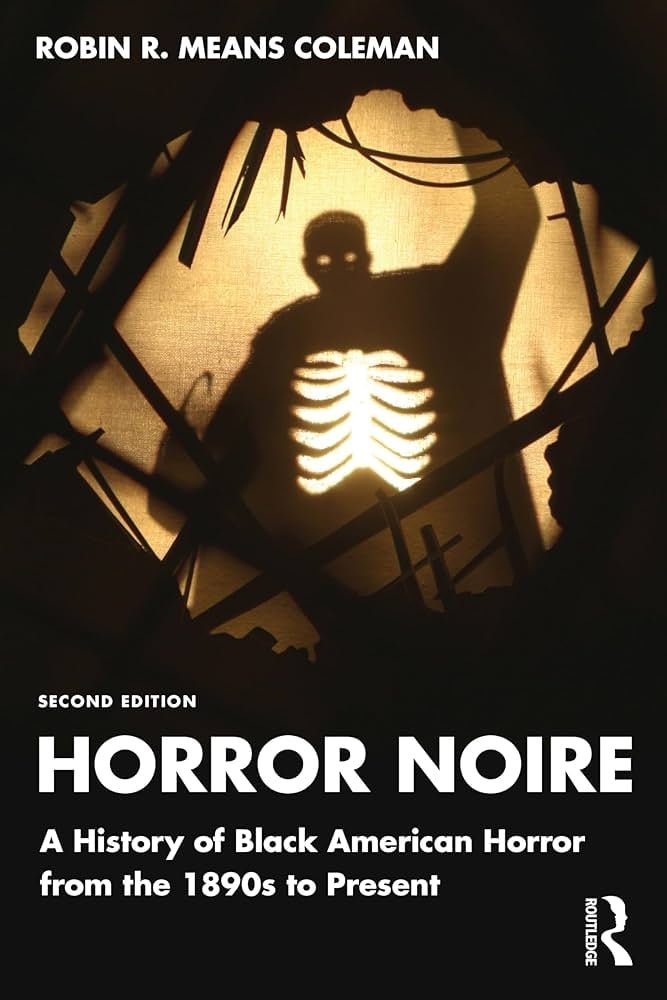




![Essential horror film and fiction books for every shelf: Summerween special [part one]!](https://images.squarespace-cdn.com/content/v1/5a89e7c6be42d637c550369c/1719160794420-QGGSLVELC4CNWOVID4NR/20240621+Hex+Libris+Blog+-+Black+and+Grey+-+Logo+-+on+White.png)

